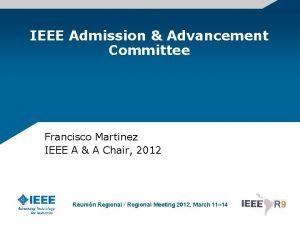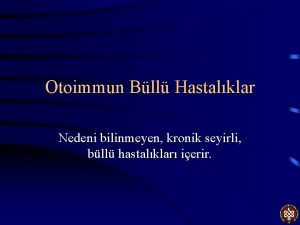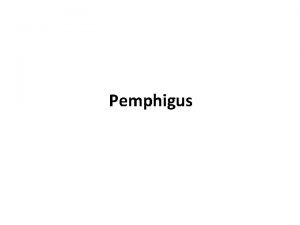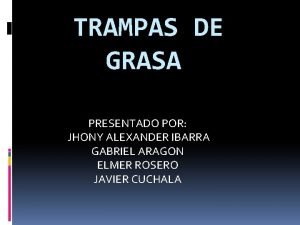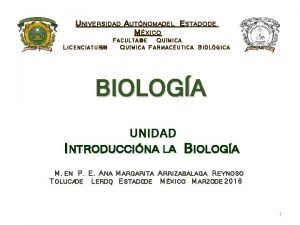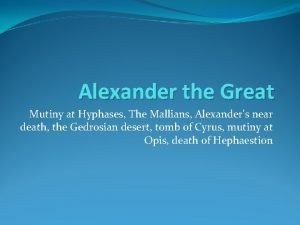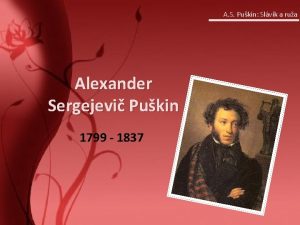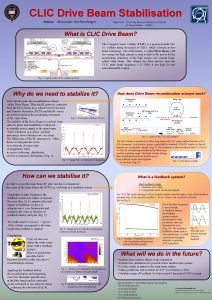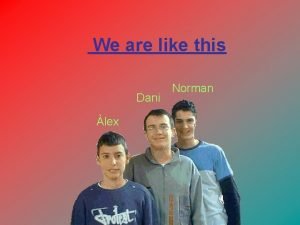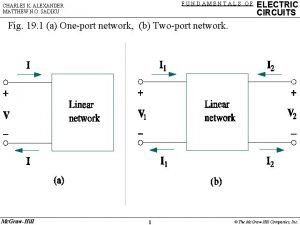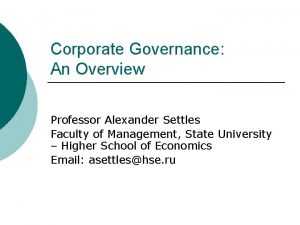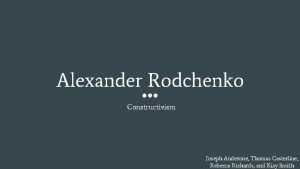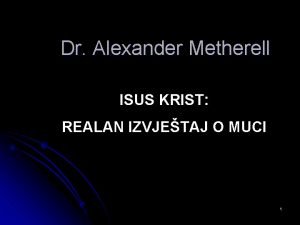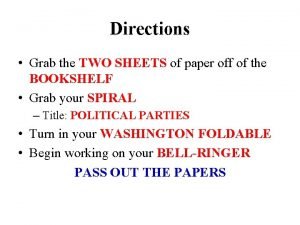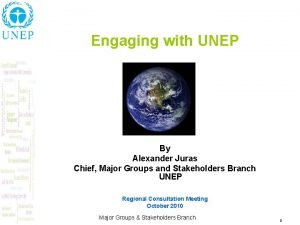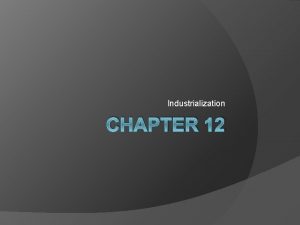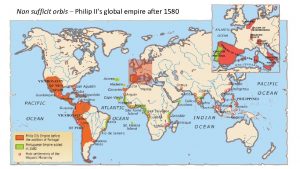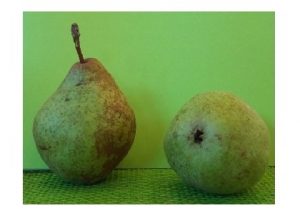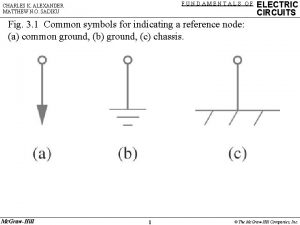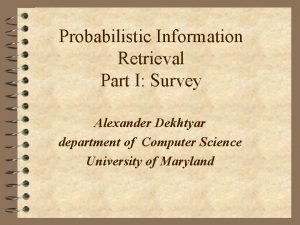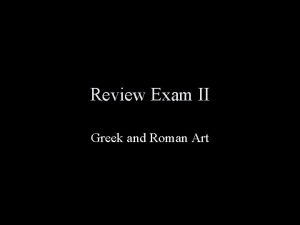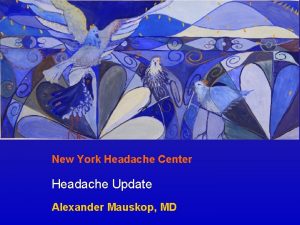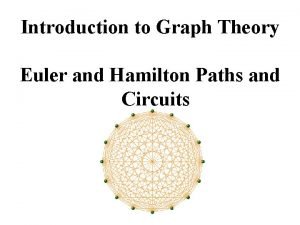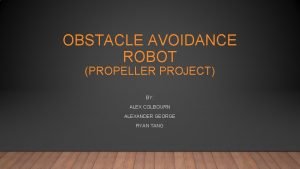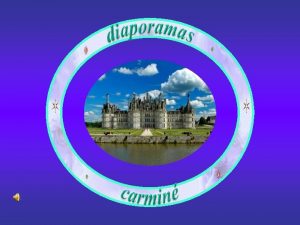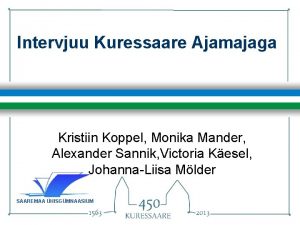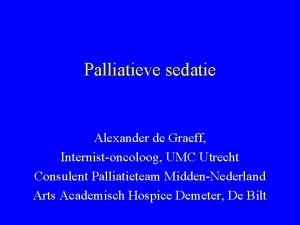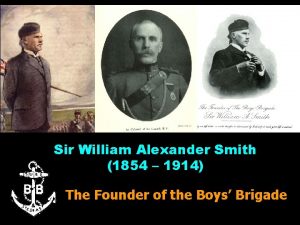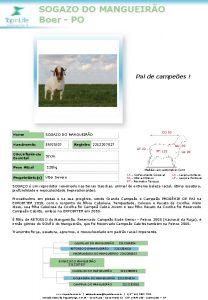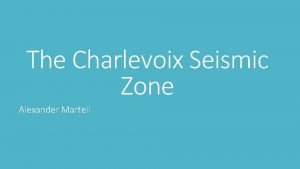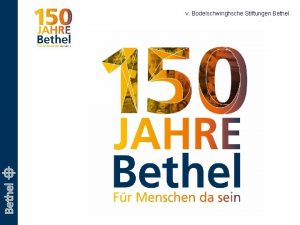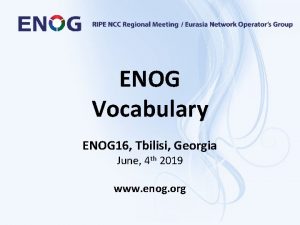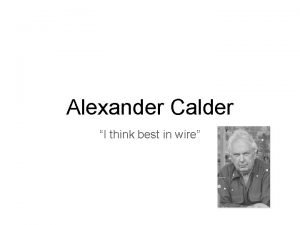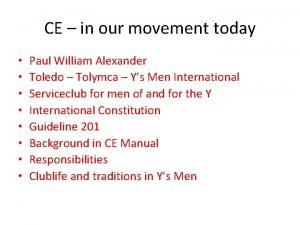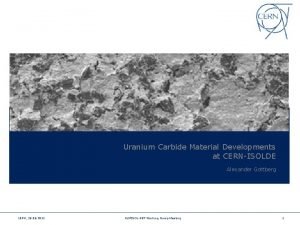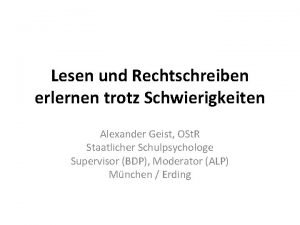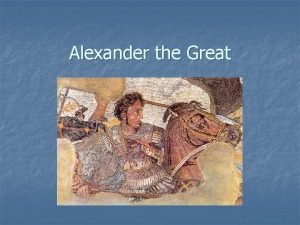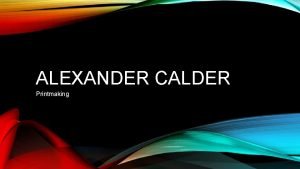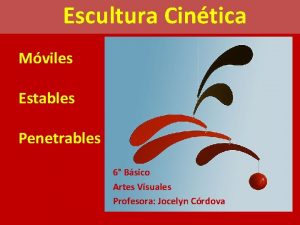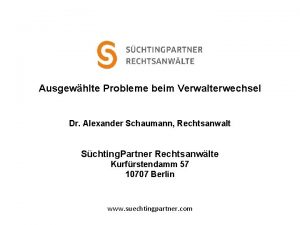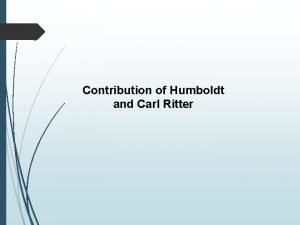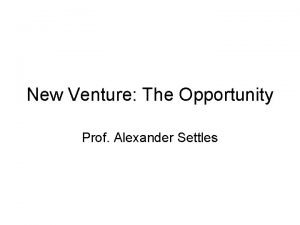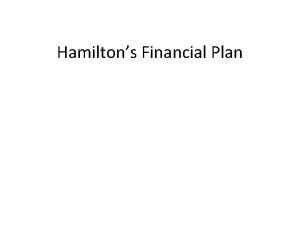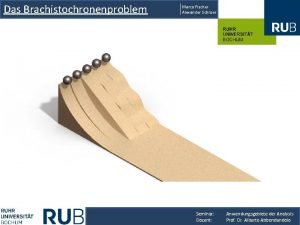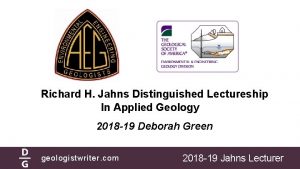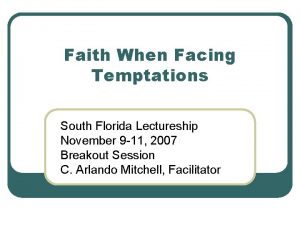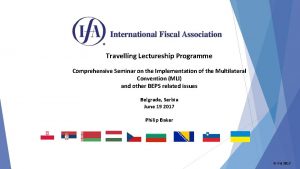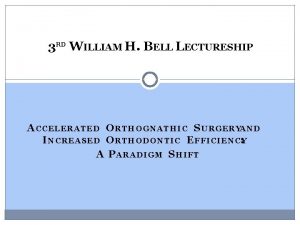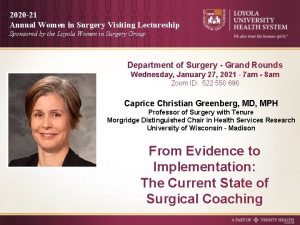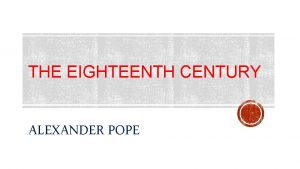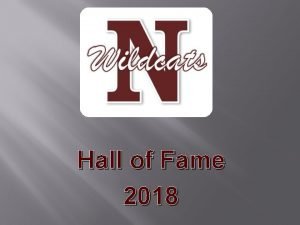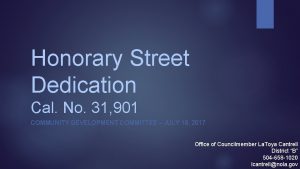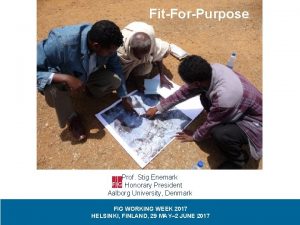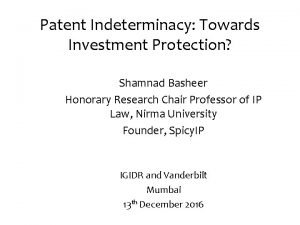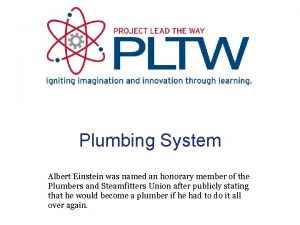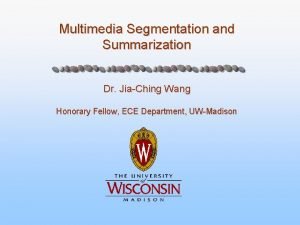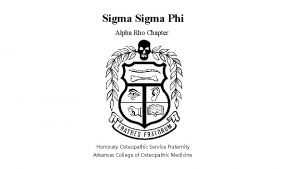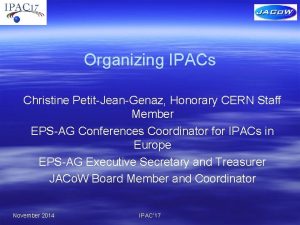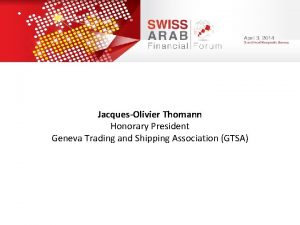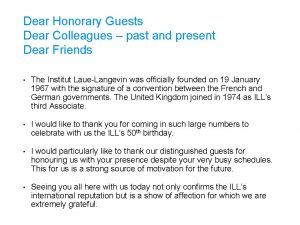Alexander A Nikolsky Honorary Lectureship Alexander A Nikolsky



![Acknowledgements Bob Ormiston [2015 Nikolsky]: “Dave, some day you will bring me a curve Acknowledgements Bob Ormiston [2015 Nikolsky]: “Dave, some day you will bring me a curve](https://slidetodoc.com/presentation_image/46e2dd27444556849dbac159eeef6fd8/image-4.jpg)

















![2008 Alexander Nikolsky Lecture Robert A. Ormiston [2015 Nikolsky] (1970) was analyzing data from 2008 Alexander Nikolsky Lecture Robert A. Ormiston [2015 Nikolsky] (1970) was analyzing data from](https://slidetodoc.com/presentation_image/46e2dd27444556849dbac159eeef6fd8/image-22.jpg)


















































- Slides: 72

Alexander A. Nikolsky Honorary Lectureship Alexander A. Nikolsky 1903 – 1963 Annual Forum, AHS International Montreal, Canada April 29, 2008

2008 Alexander Nikolsky Lecture How Dynamic Inflow Survives in the Competitive World of Rotorcraft Aerodynamics David A. Peters Mc. Donnell Douglas Professor of Engineering Washington University in St. Louis

Alexander A. Nikolsky 1903 – 1963 Acknowledgements Kurt Hohenemser
![Acknowledgements Bob Ormiston 2015 Nikolsky Dave some day you will bring me a curve Acknowledgements Bob Ormiston [2015 Nikolsky]: “Dave, some day you will bring me a curve](https://slidetodoc.com/presentation_image/46e2dd27444556849dbac159eeef6fd8/image-4.jpg)
Acknowledgements Bob Ormiston [2015 Nikolsky]: “Dave, some day you will bring me a curve with a glitch, and I will ask you what it is. If you say, ‘I don’t know, that’s the way it came out of the computer, ’ you’re fired. ” Dewey Hodges [2014 Nikolsky]: “Structures and dynamics are the exact sciences, aerodynamics and thermodynamics are the inexact sciences. ” Rose Brower: Design and production Debbie Peters: “The Love of my Life”

Ecological Niches of Aerodynamics 2008 Alexander Nikolsky Lecture CFD Free Wake Prescribed Wake Dynamic Wake

2008 Alexander Nikolsky Lecture How Dynamic Wake Models Have Survived Is there still room for simple models in the competitive world of rotorcraft analysis? 1. These models have been developed in response to pressing needs to explain physical phenomena found in experimental data. 2. These models are physically intuitive. 3. These models have been consistently based on engineering physics rather than on any heuristic mathematical fit of data. 4. These models bring in just enough physics to explain the important behavior. 5. These models are hierarchical so that each improvement includes all earlier versions and so that some version of the model can run in real time on any given computing platform.

2008 Alexander Nikolsky Lecture What is a dynamic wake model? 1. It is a model that—given the time history of blade loading—predicts the flow being pumped passed the rotor blades as a function of time, radius, and azimuth. 2. It is a model that represents this evolution of inflow in first-order form in terms of a finite number of state variables. [M]{dvn/dt} + [C]{vn} = {Fm} 3. It is a model that allows the number of states to vary with user needs.

2008 Alexander Nikolsky Lecture Foundation 1950 – 1969

2008 Alexander Nikolsky Lecture Seminal Conjecture Ken (1950) found that the measured roll damping of helicopters was roughly twice that predicted by the mathematical theories of his day. Ken Amer 1988 Nikolsky

2008 Alexander Nikolsky Lecture Amer Conjecture “The. . . discrepancy between the data and theory appears to be due primarily to the changes in induced velocity which occur during rolling because of changes in the distribution of thrust around the rotor disk. These changes in induced velocity are not taken into account in theoretical calculations because of the excessive labor that would be involved. ” Ken Amer NACA TN 2136 October 1950, p. 11. Figure 1: Source of damping in roll for a helicopter undergoing a rolling velocity.

2008 Alexander Nikolsky Lecture G. J. Sissingh, 1952

2008 Alexander Nikolsky Lecture G. J. Sissingh, 1952 Sissingh, in England, applied momentum theory to Ken Amer’s insight, but he applied it in a new way in terms of moments––in addition to thrust. Sissingh was able to obtain formulas for the gradient in inflow for the cases of hover and forward flight.

2008 Alexander Nikolsky Lecture Classical Approach Bob Loewy (1955, 1957) realized that rotor inflow, unlike fixed-wing inflow, is dominated by the returning layers of vorticity below the rotor plane. Robert G. Loewy 1984 Nikolsky

2008 Alexander Nikolsky Lecture Wake Layers

2008 Alexander Nikolsky Lecture Loewy Function

2008 Alexander Nikolsky Lecture Lessons Learned 1. It is better not to use any Wake Model at all than to use Theodorsen Theory for a rotating wing. 2. The buckets of the real part of the Loewy Function (including = 0) are the identical lift deficiency that was found by Amer and Sissingh. 3. The imaginary part of the Loewy function shows that there is a time lag in the development of that lift deficiency.

2008 Alexander Nikolsky Lecture Classical Approach Rene Miller of MIT (1964) added a three-dimensional correction. Rene Miller 1983 Nikolsky

2008 Alexander Nikolsky Lecture Development 1970 – 1989

2008 Alexander Nikolsky Lecture H. C. “Pat” Curtiss, Jr. 2000 Nikolsky Pat Curtiss and Norm Shupe (1971) show that the Sissingh Lift Deficiency could be formally cast as an equivalent Lock number with the same lift deficiency as that of Loewy = ac. R 4/Iy a*/a = [1 + a/8 V]-1 Curtiss also realized that it was sometimes necessary to put a time delay into the dynamic inflow

2008 Alexander Nikolsky Lecture REXOR Had Dynamic Inflow Lockheed’s REXOR Program also had Sissingh’s inflow effect with a time constant

Appendix on Dynamic Wake
![2008 Alexander Nikolsky Lecture Robert A Ormiston 2015 Nikolsky 1970 was analyzing data from 2008 Alexander Nikolsky Lecture Robert A. Ormiston [2015 Nikolsky] (1970) was analyzing data from](https://slidetodoc.com/presentation_image/46e2dd27444556849dbac159eeef6fd8/image-22.jpg)
2008 Alexander Nikolsky Lecture Robert A. Ormiston [2015 Nikolsky] (1970) was analyzing data from the NASA 40 x 80 and 7 x 10 wind tunnels. He discovered large discrepancies and wondered if they might be due to elastic blade bending, reversed flow, higher harmonics, tip loss, or root cut-out.

2008 Alexander Nikolsky Lecture New Hire Dave Peters had just arrived at Ames and was given the job to create a code that would solve the blade flapping problem including all of the aforementioned effects. The results still showed large discrepancies with data; and Bob Ormiston postulated the effect reported by Amer, Sissingh, and Curtiss. David Peters 2008 Nikolsky

2008 Alexander Nikolsky Lecture First Correlations The calculations showed that the inflow effect corrected steady results in hover but not forward flight and not unsteady results in either case.

2008 Alexander Nikolsky Lecture Apparent Mass Bob Ormiston postulated an apparent mass and inertia of the wake as posed by Carpenter and Fridovitch (1953) Simple potential flow theory gave the numbers.

2008 Alexander Nikolsky Lecture Correlation was excellent in hover but lousy in forward flight

2008 Alexander Nikolsky Lecture Correlation was excellent in hover but lousy in forward flight

2008 Alexander Nikolsky Lecture Kurt Hohenemser Independently, Kurt Hohenemser was trying to correlate some wind tunnel data taken by him and Sam Crews at Washington University. Hohenemser postulated a lift deficiency and phase lag of the inflow to explain the data and Dev Banerjee did parameter identification to find the gains and time constants.

2008 Alexander Nikolsky Lecture Parameter Identification The identified values were within 2% of the values used by Ormiston and Peters from the Sissingh theory and potential flow for apparent mass.

2008 Alexander Nikolsky Lecture Anton J. “Jack” Landgrebe In the meantime, efforts by Peters and Ormiston to find a forward flight version of dynamic inflow were fruitless. However, Vortex Lattice Models were coming into their own as computational speed and memory increased.

2008 Alexander Nikolsky Lecture Free-Vortex Wake • Trailing Tip Vortex • Trailing Vortex Filaments • Vortex Lattice • Vortex Sheet

2008 Alexander Nikolsky Lecture Dale Pitt Dave Peters returned to Washington University in 1975 and Dale Pitt came as his first doctoral student in 1977. Pitt had a better idea and discovered Prandtl, Kinner and Mangler/Squire.

2008 Alexander Nikolsky Lecture Circular Wing Theory Kinner Paper Wieslaw Z. “Steppy” Stepniewski 1981 Inaugural Nikolsky Recipient

2008 Alexander Nikolsky Lecture Pitt - Peters Model.

2008 Alexander Nikolsky Lecture Connections By the way, Pitt ran Landgrebe, too, with the same results.

2008 Alexander Nikolsky Lecture Gopal Gaonkar helped with the correlations. IT WAS LIKE MAGIC!

2008 Alexander Nikolsky Lecture Bousman and Johnson William G. Bousman took some ground resonance data. [2011 Nikolsky] Wayne Johnson tried to correlate it with his new comprehensive code, CAMRAD. [2010 Nikolsky]

2008 Alexander Nikolsky Lecture Inflow Mode Wayne proved that there was an inflow mode. Soon every stability and handling qualities code had some form of dynamic inflow in it.

2008 Alexander Nikolsky Lecture Peretz P. Friedmann As other aeroelasticians began to understand the importance of aerodynamics as states, Friedmann [2013 Nikolsky] began to compare Loewy Theory and dynamic inflow theory and discovered what appeared to be a discrepancy.

2008 Alexander Nikolsky Lecture Singularity The discrepancy was simply that Loewy theory has a singularity for the collective mode at zero frequency. But looking at that got Dave Peters thinking.

2008 Alexander Nikolsky Lecture Plea to NASA - Army In January 1985, Dave Peters pitched an idea to Bob Ormiston and Bill Warmbrodt that we could generalize the wake.

2008 Alexander Nikolsky Lecture Dynamic Flow Diagram

2008 Alexander Nikolsky Lecture Time Constants at Harmonic Numbers Extension of Pitt Model: T = 0. 75 / (1. 5 + m) Loewy function at r = ¾: T = 0. 75/m

2008 Alexander Nikolsky Lecture Georgia Tech In 1985, Dave Peters joined Georgia Tech Robin Gray 1991 Nikolsky Dan Schrage 1999 Nikolsky

2008 Alexander Nikolsky Lecture Cheng Jian He came as Dave Peter’s first Georgia Tech doctoral student (déjà vu all over again). He came up with closed-form matrices for all harmonics and distributions.

2008 Alexander Nikolsky Lecture Langley Wind Tunnel Data This was just in time for the Langley data. Why did dynamic wake out perform vortex lattice?

2008 Alexander Nikolsky Lecture Hover Test Stand Data This was also just in time to correlate with hover test stand data taken by Komerath. Ay Su

2008 Alexander Nikolsky Lecture Theory and Experiment When theory did not agree with the experiment, it turned out that Narayanan M. Komerath discovered a phasing error in the data extraction. (No one believes theory except the one who derived it, and everyone believes the data except the one who took it. )

2008 Alexander Nikolsky Lecture Refinement 1990 –

2008 Alexander Nikolsky Lecture Back to Washington University In 1991 Dave Peters returned to Washington University. Cheng Jian He was now at Advanced Rotorcraft Technology (ART), and dynamic wake models were now being put into real-time flight simulations, including FLIGHTLAB.

2008 Alexander Nikolsky Lecture Back to Washington University People began to realize that these simulations were missing the off-axis coupling. Aviv Rosen postulated that, when in a pitching or rolling maneuver, the vortices piled up more densely on one side of the rotor than the other.

2008 Alexander Nikolsky Lecture Aviv Rosen Fig. 2 A graphic description of the wake distortion during a constant pitch rate.

2008 Alexander Nikolsky Lecture Wake Curvature Soon, Pat Curtiss had shown that this could also be predicted by momentum-theory dynamic inflow with the pitch rate as a new forcing function. Pat Curtiss 2000 Nikolsky Prasad and his students at Georgia Tech showed that, just as Pitt had added wake skew, one could add wake curvature as a new parameter effecting [L].

2008 Alexander Nikolsky Lecture Wake Distortion Parameters η+ν R χ Contraction Skew Curvature V = η +2ν X = tan(χ/2) К = 1/R

2008 Alexander Nikolsky Lecture Generalized Dynamic Wake Model

2008 Alexander Nikolsky Lecture Wake Curvature J. V. R. Prasad UH-60 Off-axis pitch to lateral stick doublet input (40 knots)

2008 Alexander Nikolsky Lecture Velocity Potential Model Jorge Morillo, Ke Yu, and Antonio Hsieh worked together to show that the entire inflow theory could be derived by application of a Galerkin Method to the potential flow equations with the states being coefficients of velocity potentials. Thus, the states imply all three components of flow everywhere in the flow field. Jorge Morillo

2008 Alexander Nikolsky Lecture Jorge Morillo

2008 Alexander Nikolsky Lecture Steven Makinen showed how swirl correction could give results of Goldstein/ Prandtl at high inflow. This gave answer to Frank Harris 2006 Nikolsky

2008 Alexander Nikolsky Lecture Effect of Wake Rotation Circulation at any blade radial location for Prandtl, Goldstein, and using Finite-State methods.

2008 Alexander Nikolsky Lecture Effect of Wake Rotation Circulation at any blade radial location for Prandtl, Goldstein, and using Finite-State methods.

Most Recent Additions Zhongyang Fei and Jianzhe Huang now have shown how to get the flow below the disk (including inside of the wake) by the Adjoint Theorem. They also have modified the modle to have complete nonlinearities and wake curvature.

2008 Alexander Nikolsky Lecture So, how have dynamic wake models survived in the competitive world of aerodynamic models? • They are founded in responses to experimental data. • They have just enough texture to explain the desired phenomena and no more. • They are hierarchical so that each new model is easily put into the old slot and so that the user can truncate at just the fidelity needed. • What they lack in modeling detail, they make up in efficient computation.

2008 Alexander Nikolsky Lecture Will models like this ever be obsolete? I don’t think so. • No matter how fast computers become, they will never be able to solve every molecule in real time, and lower fidelity models will be needed. • There will always be a need for real-time simulation. • These models give physical insight into behavior that is helpful in the design process beyond just the numbers of the calculation.

2008 Alexander Nikolsky Lecture Will CFD, Vortex lattice and comprehensive codes ever be replaced by simple models? Absolutely not. • These analysis tools are indispensable; and, as computers become faster, these tools will take over more and more of the ecological niches now dominated by simple codes. • There will always, however, be niches in which the big predators cannot compete as effectively as the simple, closed-form methods.

2008 Alexander Nikolsky Lecture Conclusions “There are more things in heaven and earth, Horatio, than are even dreamt of in your philosophy. ” Shakespeare “Life consisteth not in the abundance of things which a man possesseth. ” Jesus of Nazareth “The purpose of computing is insight, not numbers. ” Hamming “Don’t ever say, ‘That’s the way it came out of the computer. ’” Ormiston

2008 Alexander Nikolsky Lecture Finis. ANY QUESTIONS?

Most Recent Additions • Zhongyang Fei and Jianzhe Huang now have shown how to get the flow below the disk with complete nonlinearities.

2008 Alexander Nikolsky Lecture Loewy Function

2008 Alexander Nikolsky Lecture Loewy Function

2008 Alexander Nikolsky Lecture Velocity Potential Model Most recently, data taken in partial ground effect by the Japanese show the importance of having all three components of inflow everywhere in the flow field. Since the He model is from potential flow theory, it seemed logical that, given one component of the velocity, one could find a velocity potential and, thus, all three components.

2008 Alexander Nikolsky Lecture Wake Curvature J. V. R. Prasad
 Alexander nikolsky
Alexander nikolsky Ieee senior member application example
Ieee senior member application example The honorary shepherds
The honorary shepherds Greenhand ffa degree requirements
Greenhand ffa degree requirements Nikolsky fenomeni pozitif hastalıklar
Nikolsky fenomeni pozitif hastalıklar Basement membrane stain
Basement membrane stain Nikolsky sign in pemphigus
Nikolsky sign in pemphigus Nikolsky sign in pemphigus
Nikolsky sign in pemphigus Trampa de grasas diseño
Trampa de grasas diseño Carlos linneo biografia
Carlos linneo biografia Alexander the great mutiny
Alexander the great mutiny Alexander puškin slávik a ruža
Alexander puškin slávik a ruža Alex theile
Alex theile Dr alexander kushnir
Dr alexander kushnir Alexander felming
Alexander felming The bridegroom by alexander pushkin
The bridegroom by alexander pushkin Alexander the great
Alexander the great Alexander the great map activity
Alexander the great map activity Alexander gerbershagen
Alexander gerbershagen Norman alexander garcia
Norman alexander garcia Fundamentals of electric
Fundamentals of electric Alexander hamilton figli
Alexander hamilton figli Alexander settles
Alexander settles Anderone
Anderone Alexander metherell
Alexander metherell A sharpshooter's last sleep
A sharpshooter's last sleep Hamilton vs jefferson chart
Hamilton vs jefferson chart Alexander calder mobile-stabile
Alexander calder mobile-stabile Alexander juras
Alexander juras Where was alexander graham bell telephone invented
Where was alexander graham bell telephone invented Non sufficit orbis philip ii
Non sufficit orbis philip ii Kongressbirne
Kongressbirne Charles k. alexander matthew n. o. sadiku
Charles k. alexander matthew n. o. sadiku Alexander dekhtyar
Alexander dekhtyar Alexander the great confronts darius iii
Alexander the great confronts darius iii Calder mobiles and stabiles
Calder mobiles and stabiles New york headache center
New york headache center Adbusters
Adbusters Euler graph
Euler graph Additativ
Additativ Alex colbourn
Alex colbourn Alexander nikolaevich averin
Alexander nikolaevich averin Alexander koppel
Alexander koppel The rape of the lock introduction
The rape of the lock introduction Alexander de graeff
Alexander de graeff History of sir william alexander smith
History of sir william alexander smith How was philip ii able to conquer greece
How was philip ii able to conquer greece Sogazo
Sogazo Alexander martell
Alexander martell Tonia alexander
Tonia alexander Haus emmaus bethel
Haus emmaus bethel There is nothing impossible to him who will try
There is nothing impossible to him who will try Alexander semenyaka ripe
Alexander semenyaka ripe Knutepunktet uio
Knutepunktet uio Alexander wechsler
Alexander wechsler Alexander calder wire
Alexander calder wire Paul william alexander
Paul william alexander Alexander gottberg
Alexander gottberg Alexander the great summary
Alexander the great summary Alexander spiegelman
Alexander spiegelman Alexander geist schulpsychologe
Alexander geist schulpsychologe In 331 bce, alexander the great successfully invaded egypt.
In 331 bce, alexander the great successfully invaded egypt. Alexander calder medium
Alexander calder medium Escultura cinetica estable
Escultura cinetica estable Amtsniederlegung durch verwalter
Amtsniederlegung durch verwalter Humboldt contribution in geography
Humboldt contribution in geography Judianne alexander
Judianne alexander Alexander luria
Alexander luria Alexander settles
Alexander settles Alexander hamilton financial plan
Alexander hamilton financial plan Deabusque declinazione
Deabusque declinazione Where was hamilton born
Where was hamilton born Brachistochronenproblem
Brachistochronenproblem

